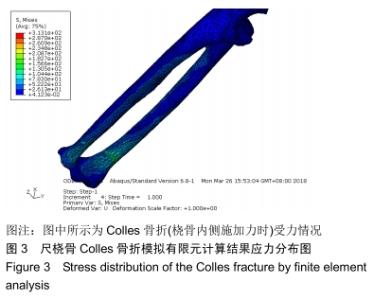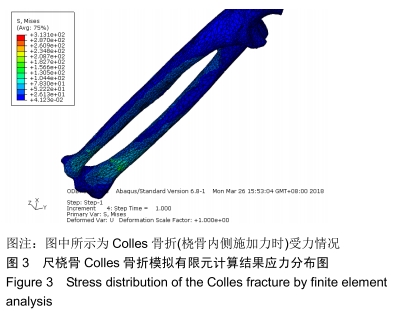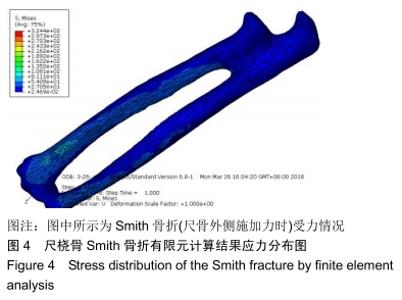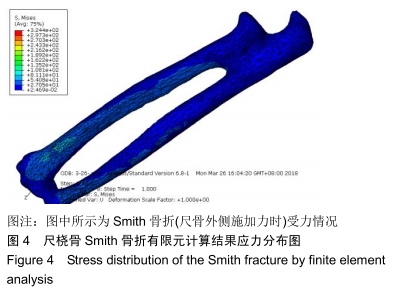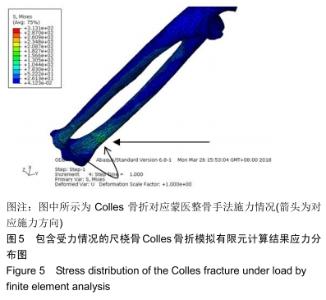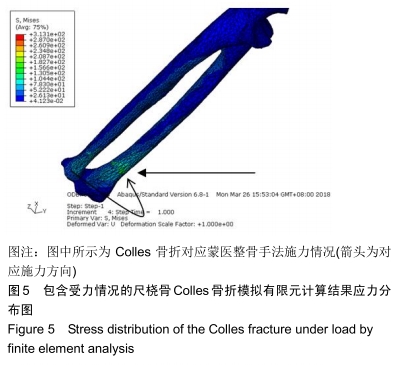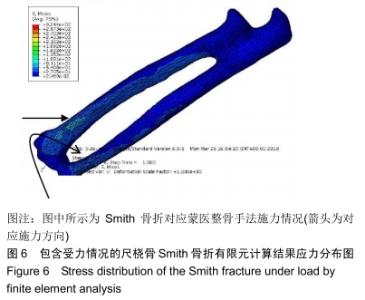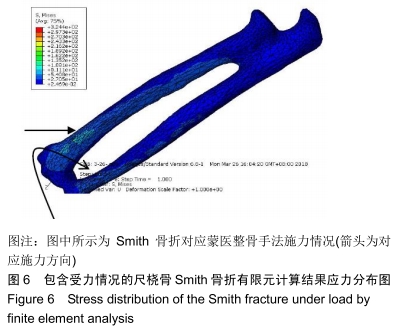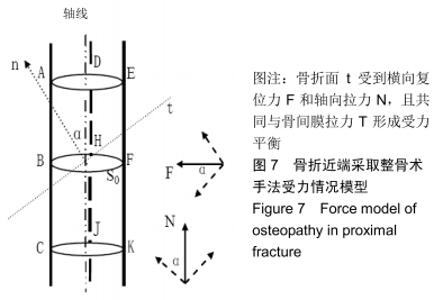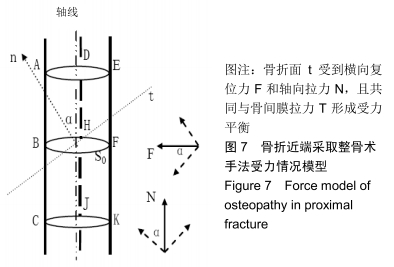[1] 李忠贤,姬宇程,翁羽洁,等.基于尺桡骨有限元模型的蒙医整骨手法分析[J].中国组织工程研究,2019,23(20):3153-3157.
[2] 韩庆斌,刘国辉,熊家伟,等.尺桡骨骨折治疗分析[J].实用骨科杂志,2011,17(4):353-355.
[3] 邱士超,刘利,吴迪.股骨头坏死的生物力学及有限元分析相关研究[J].临床医药文献电子杂志,2019,6(28):43-44.
[4] 麦麦提艾力•奥斯曼(Mamateli Osman). 维吾尔医治疗儿童前臂双骨折临床疗效观察[D].乌鲁木齐:新疆医科大学,2017.
[5] 张晓峰,罗轶,沈国平,等.三种方法治疗尺桡骨中段双骨折的生物力学比较与分析[J].中国矫形外科杂志,2010,18(6):483-485.
[6] 刘寒江,郭营,梅伟.基于兔尺桡骨解剖学测量的新型骨缺损模型的建立及评估[J].中国修复重建外科杂志,2016,30(2):173-177.
[7] 胡欣.儿童尺桡骨双骨折的外科治疗方案研究[J].实用骨科杂志, 2015,21(9):794-797.
[8] 魏兵,许泽川,常山.有限元法分析腰椎椎弓根螺钉的生物力学特征[J].中国组织工程研究,2018,22(19):3091-3096.
[9] 李宁,杨涵,黄秋悦,等.3D打印钛合金个性化骨盆假体静态分析[J].医用生物力学,2017,32(6):487-493.
[10] 马长,苏驰.儿童尺桡骨干完全移位骨折的治疗体会[J].中国骨与关节损伤杂志,2015,30(5):538-539.
[11] 王志坤,余占洪,谢文伟,等.背侧单切口重建钢板内固定治疗尺桡骨中上段双骨折疗效分析[J].中国骨与关节损伤杂志, 2014, 29(9):904-906.
[12] 照那木拉,陶乐,王梅.中国蒙医整骨术骨折固定原理探讨[J].中华中医药杂志,2014,29(3):820-822.
[13] 王伟,李志军,武永刚,等.腰椎相关骨性结构参数的研究进展[J].内蒙古医科大学学报,2013,35(3):233-237.
[14] 郝飞,李志军.有限元方法在儿童颈椎生物力学研究中的应用[J].内蒙古医科大学学报,2014,36(S1):182-186.
[15] 徐琴.早期康复训练护理对尺桡骨双骨折患者前臂功能恢复的影响[J].数理医药学杂志,2015,28(3):461-462.
[16] 马会旭,刘敏.先天性尺桡骨融合的外科治疗进展[J].华西医学, 2012,27(9):1434-1437.
[17] 朱攀前,廖怀章,李黎.手法复位夹板中立位外固定治疗尺桡骨中段双骨折30例临床观察[J].湖南中医杂志,2017,33(7):76-78.
[18] 朱攀前. 成人前臂尺桡骨中段双骨折小夹板固定不同位置的力学分析[D].长沙:湖南中医药大学,2017.
[19] 王玲,王梦书,周奇.超声诊断尺桡骨远端骨折价值的系统评价[J].中国循证医学杂志,2017,17(2):213-220.
[20] 照那木拉,王梅,达古拉.中国蒙医整骨术的科学渊源及其发展新思考[J].内蒙古民族大学学报,2009,15(2):88-89.
[21] 照那木拉,王梅,肖吉日木图.中国蒙医整骨术“四步疗法”的宏观理念[J].中医杂志,2012,53(9):749-750+763.
[22] 王梅,宝龙,照那木拉.中国蒙医整骨术骨折分型两种判据及其因果关系[J].内蒙古民族大学学报(自然科学版),2011,26(1):73-75.
[23] 邢海清,苏寅,李荣,等.小夹板合U型石膏外固定治疗尺桡骨干双骨折的临床观察[J].实用中西医结合临床,2014,14(02):40-42.
[24] JOHNSON JE, TROY KL. Validation of a new multiscale finite element analysis approach at the distal radius. Med Eng Phys. 2017;44:16-24.
[25] LOESAUS J, WOBBE I, STAHLBERG E, et al. Reliability of the pronator quadratus fat pad sign to predict the severity of distal radius fractures. World J Radiol. 2017;9(9):359-364.
[26] HOSSEINI HS, DÜNKI A, FABECH J, et al. Fast estimation of Colles' fracture load of the distal section of the radius by homogenized finite element analysis based on HR-pQCT. Bone. 2017;97:65-75.
[27] GIBBS JC, GIANGREGORIO LM, WONG AKO, et al. Appendicular and whole body lean mass outcomes are associated with finite element analysis-derived bone strength at the distal radius and tibia in adults aged 40years and older. Bone. 2017;103:47-54.
[28] 吴耿,张振伟,张美超,等.钢板骨折区增加螺钉帽对胫骨骨折内固定影响的有限元分析[J].中国临床解剖学杂志, 2019,37(2): 185-189.
[29] 刘波.提按法应用于Colles骨折复位中的数字虚拟研究[D].广州:广州中医药大学,2012.
[30] 王柄訸,张晓刚,秦大平,等.有限元分析在功能复位治疗骨质疏松性胸腰椎压缩骨折力学稳定性中的研究进展[J].新中医,2019, 51(2):29-32.
[31] 刘献祥.骨伤科生物力学[M].北京:科学技术出版社,2010.
[32] 陈玉凤.护理干预对手术治疗尺桡骨骨干骨折的影响分析[J].中国当代医药,2017,24(34):195-197.
[33] 姜自伟,黄枫,庞智晖,等.辨稳论治——从有限元分析角度探讨微观辨证在中医骨伤领域的发展[J].中医正骨,2012,24(12):77-78.
[34] 牛晓东,卢莉蓉.医学有限元仿真实验的研究[J].中国现代教育装备,2013,11(19):84-86.
[35] 陈灼彬,万磊.医学有限元的建模方法[J].中国组织工程研究与临床康复,2007,11(31):6265-6267.
[36] 高慧,白丽云,李显,等.聚醚醚酮(PEEK)个性化重建板修复下颌骨缺损的三维有限元分析[J].医用生物力学, 2019,34(2): 193-199.
[37] 刘广伟,成永忠,祝建飞,等.旋前-外旋型三踝骨折逆移位手法复位有限元分析[J].医用生物力学,2018,33(6):523-528.
[38] 路博,孔繁林,丁亮华,等.数字化钢板在尺桡骨骨干骨折中的临床应用[J].中国骨与关节损伤杂志,2014,29(5):457-459.
|
